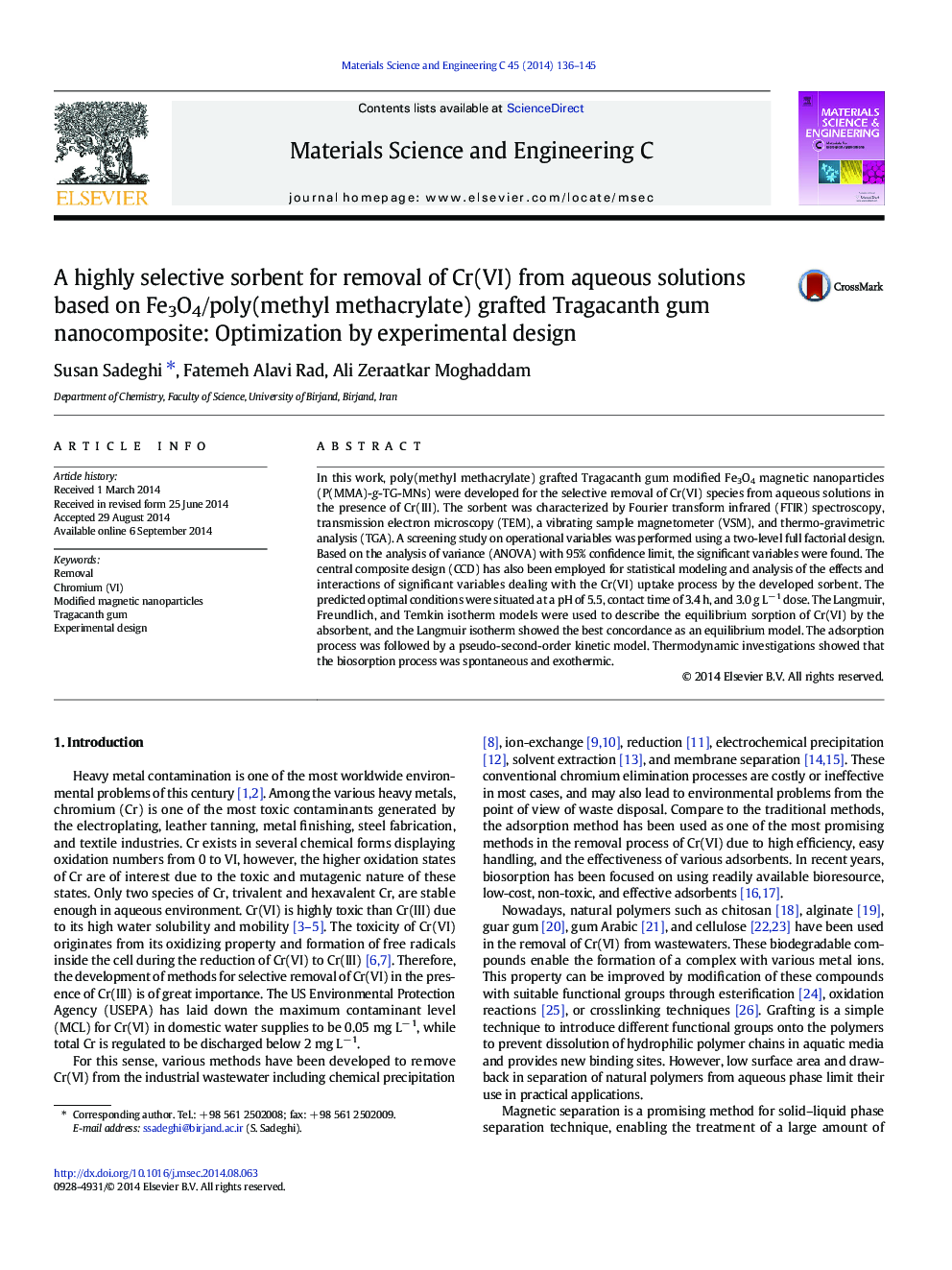| کد مقاله | کد نشریه | سال انتشار | مقاله انگلیسی | نسخه تمام متن |
|---|---|---|---|---|
| 1428541 | 1509176 | 2014 | 10 صفحه PDF | دانلود رایگان |

• Fe3O4 nanoparticles were modified with Poly(methyl methacrylate) grafted Tragacanth gum
• P(MMA)-g-TG -MNPs can preferentially adsorb Cr(VI) in the presence of Cr(III)
• The effects of operational parameters on Cr(VI) removal were evaluated by RSM
• Adsorption mechanism, kinetics, and isotherm have been explored
• The sorbent was successfully used to remove Cr(VI) from different water samples
In this work, poly(methyl methacrylate) grafted Tragacanth gum modified Fe3O4 magnetic nanoparticles (P(MMA)-g-TG-MNs) were developed for the selective removal of Cr(VI) species from aqueous solutions in the presence of Cr(III). The sorbent was characterized by Fourier transform infrared (FTIR) spectroscopy, transmission electron microscopy (TEM), a vibrating sample magnetometer (VSM), and thermo-gravimetric analysis (TGA). A screening study on operational variables was performed using a two-level full factorial design. Based on the analysis of variance (ANOVA) with 95% confidence limit, the significant variables were found. The central composite design (CCD) has also been employed for statistical modeling and analysis of the effects and interactions of significant variables dealing with the Cr(VI) uptake process by the developed sorbent. The predicted optimal conditions were situated at a pH of 5.5, contact time of 3.4 h, and 3.0 g L− 1 dose. The Langmuir, Freundlich, and Temkin isotherm models were used to describe the equilibrium sorption of Cr(VI) by the absorbent, and the Langmuir isotherm showed the best concordance as an equilibrium model. The adsorption process was followed by a pseudo-second-order kinetic model. Thermodynamic investigations showed that the biosorption process was spontaneous and exothermic.
Figure optionsDownload as PowerPoint slide
Journal: Materials Science and Engineering: C - Volume 45, 1 December 2014, Pages 136–145